
| << Designing the market yatai set 2022-02-11 | Painting the market stalls >> 2022-03-25 |
At long last we have some printed previews to show you, for our new Samurai Market Stalls set!
This is a modular set of market stalls (called yatai in Japanese) and accessories, which were often found along busy main streets and are still seen today at markets and festivals.
There are three different types of market stall structures included in the set, and 10 different accessory sets. By mixing and matching wall and roof pieces with the various accessories and decorations, many variations can be created.
* All these models were printed on an Ender3 V2 printer (a cheap and reliable FDM printer), at 0.2mm layer height. The accessories were mostly printed at 0.1mm layers, because the details are quite small!
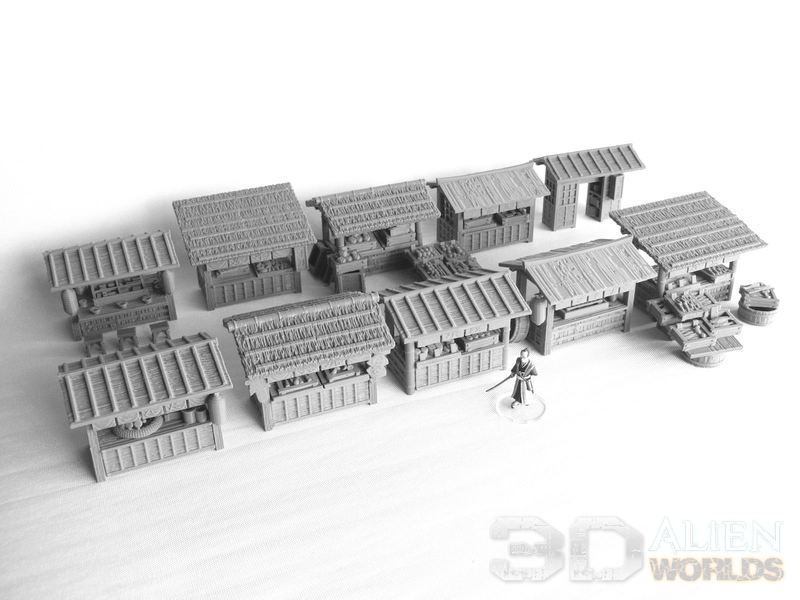
▲ Here's the full set of 10 stalls, with a variety of roof and wall types. It's possible to make 10 unique stall shapes, and then you can start adding all the accessory sets!
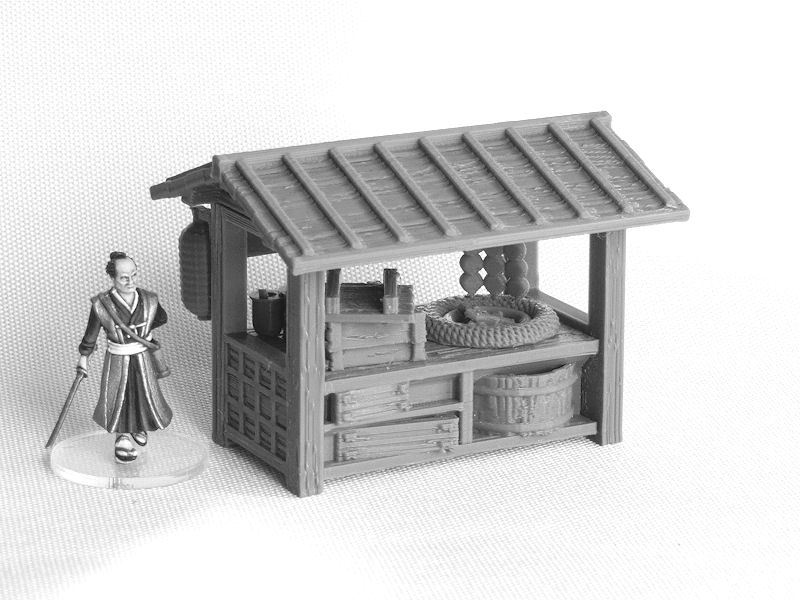
▲ Before we take a look at the different stalls, here's a quick picture of the back of a stall. You can see that some basic boxes and tubs have been included on shelves, but every part of this 80-file set can be printed without supports.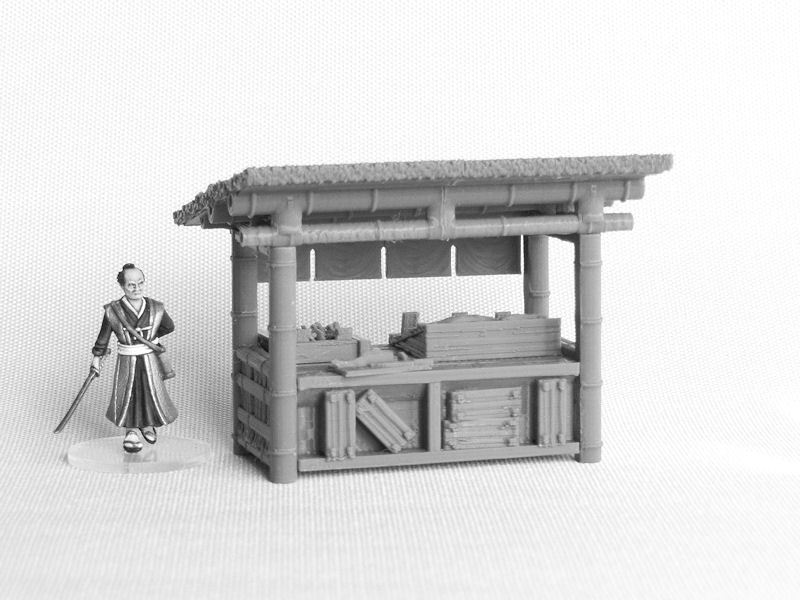
▲ Here's an alternative version of the back. With 2 versions, you can always mirror the designs too.
Anyway, let's see what the front of these market stalls look like.....
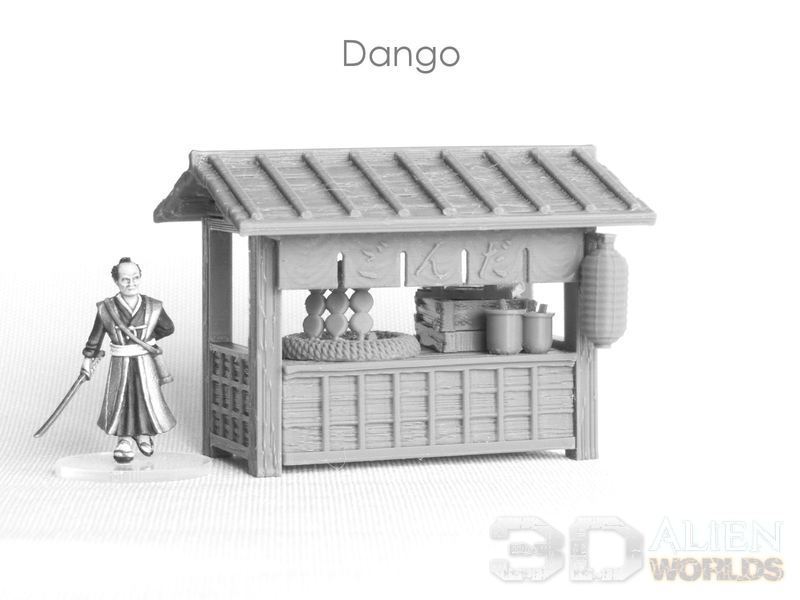
▲ Stall #1 is for dango, which are balls of sticky mochi, grilled by a circular firepit. This model also features a curtain with "dango" written on it (reading right to left, as would have been the style in those days), extra boxes and sauce pots, and a paper lantern on the right.
Blank versions of the curtains are also included in the set, along with individual text-versions for an authentic look.
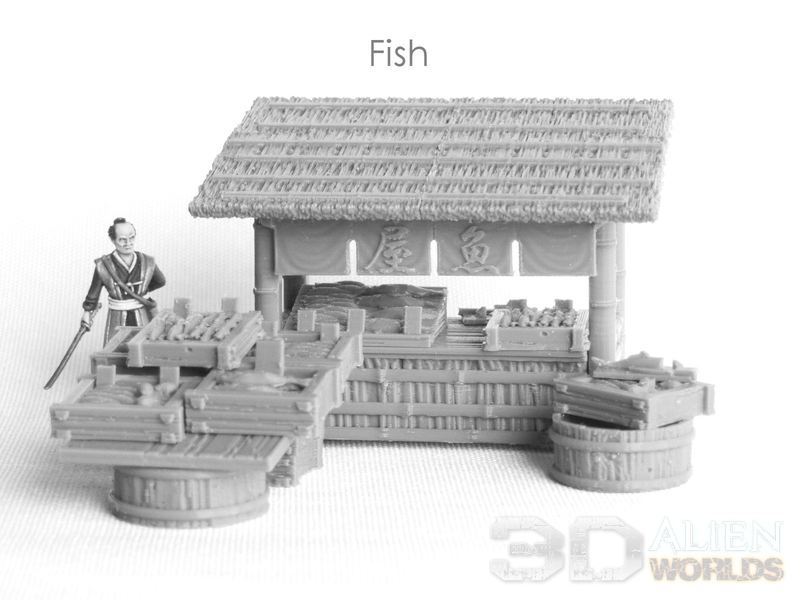
▲ #2: The fish stall is quite a big one, with so much seafood on offer that the stallholder has expanded display space onto extra tubs and boxes. Various sizes of fish compete with some cute little octopus in the boxes, and there's a cutting board and knife nearby too!
This stall is made from bamboo, with a sloped roof made of sticks or rush matting, held in place by long strips of bamboo.
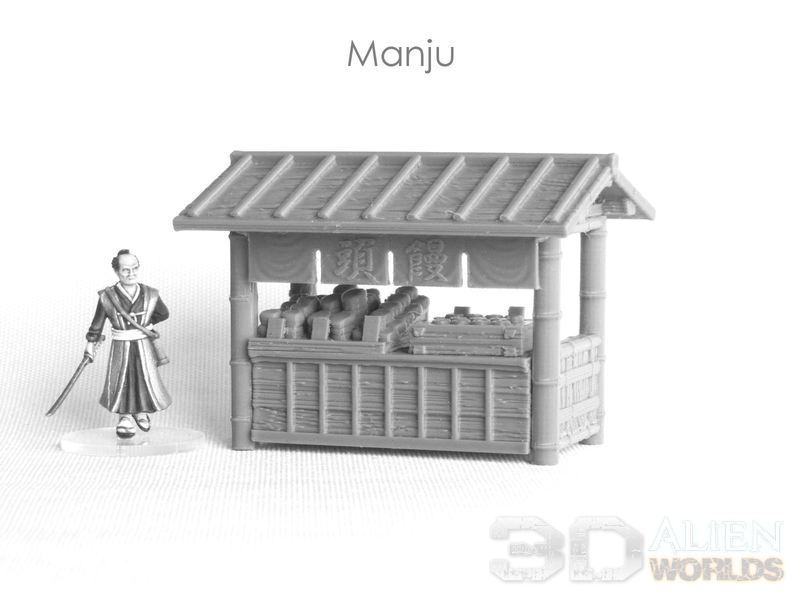
▲ #3: Manju are rice cakes made of mochi (sticky rice), and are traditionally eaten as snacks or offered as gifts. You often find them at festivals and religious events in modern-day Japan, where the white and pink rice cakes are sometimes produced by shrines.
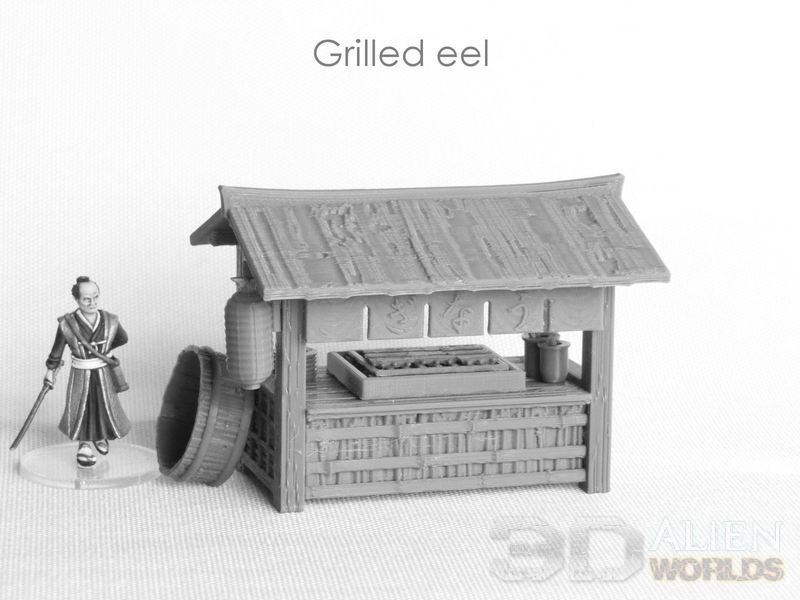
▲ Stall #4 is another hot food stall, selling strips of eel grilled over coals. I added an empty (and probably quite smelly!) tub on the side, plus dishes and sauces on the countertop. Another paper lantern, often found on food stalls, is hanging on the side for some extra advertising.
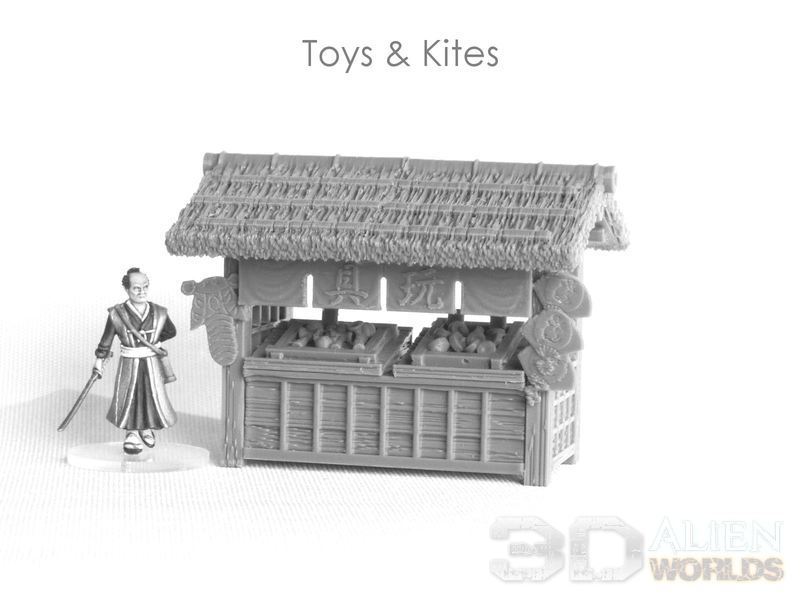
▲ #5: Toy Stall! This is the only non-food stall in the set, and features some cute little toys in trays, traditionally found in Japan. The left-hand tray contains kendama, which are cup and ball toys, and the other tray contains some spinning tops.
The stallholder has also added some colourful kits to the front of his yatai stall.
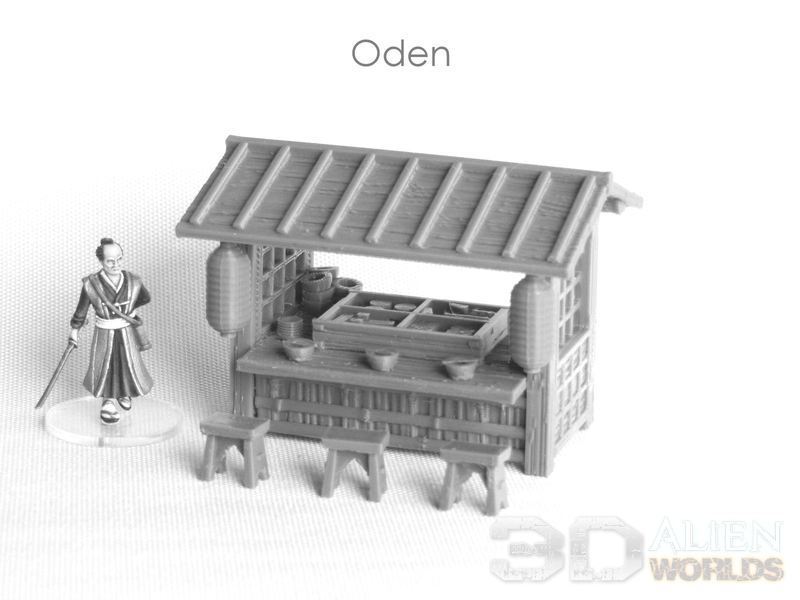
▲ #6 is probably my favourite of the stalls, because I can easily imagine myself sitting on a stool munching away on some oden hotpot with friends. The central tray is filled with broth and heated from below, and contains an assortment of radishes, eggs, tofu and other items.
I didn't add a front curtain to this stall (although there is one in the file set), because I wanted to show off the food tray - I'm planning to use a few drops of clear resin as water there!
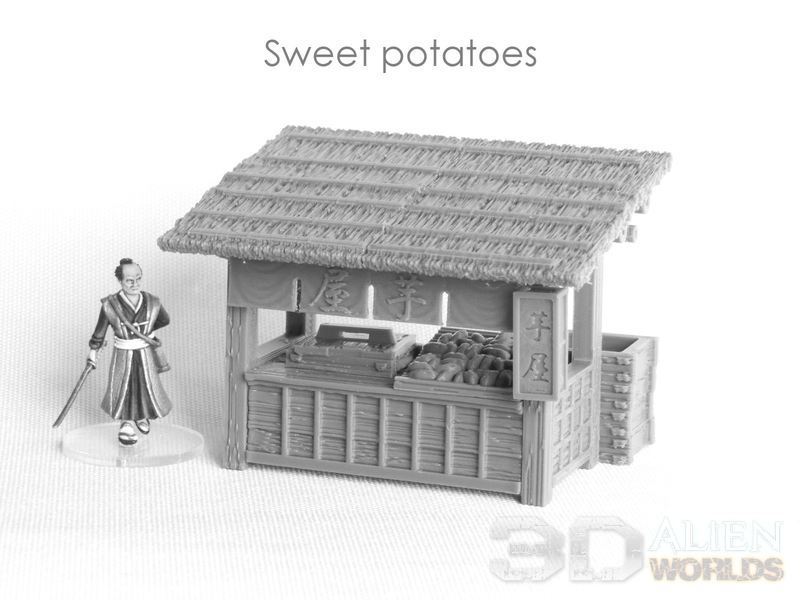
▲ Stall #7 sells sweet potatoes, which are steamed in the small oven on the left, and sold hot. I added some extra boxes to the back of this stall, and a vertical lightbox on the front right. The kanji characters for "potato stall" are inset into the sign, and should work well with a light touch of ink or black wash.
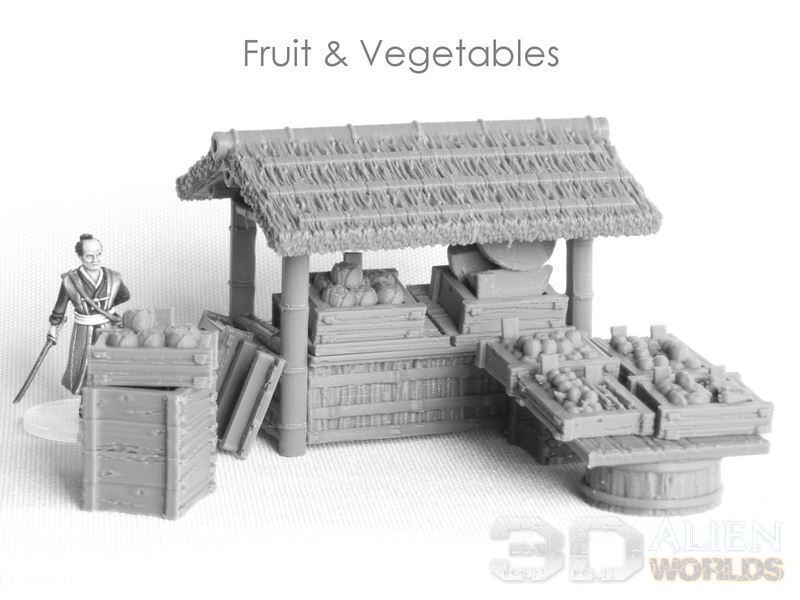
▲ Another big stall, #8 sells an assortment of fruit (apples, oranges, watermelon slices) and plenty of vegetables (onions, spring onions, potatoes, carrots and cabbages). Like the fish stall model, extra display space has been created using upturned tubs and boxes.
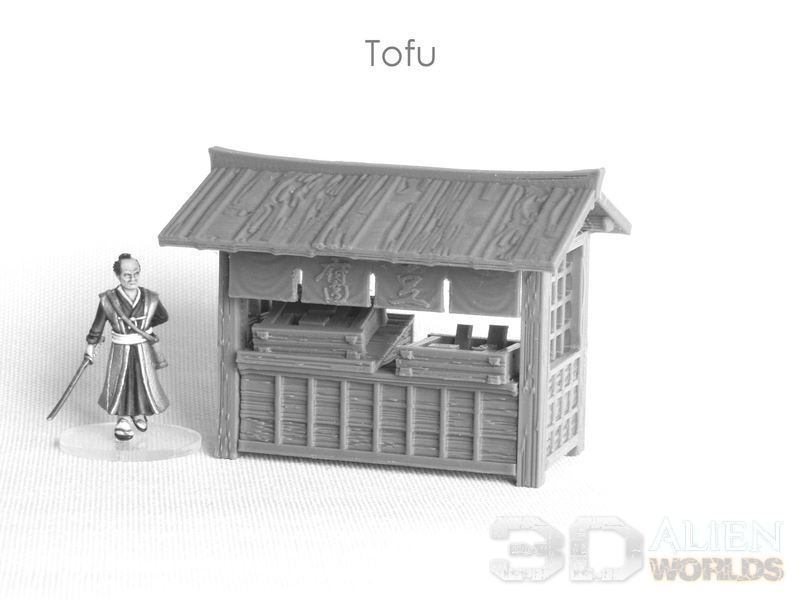
▲ Stall #9 sells tofu, which is bean curd pressed into blocks. I'm not a huge fan of tofu myself, but it's a staple ingredient in Japanese cooking.
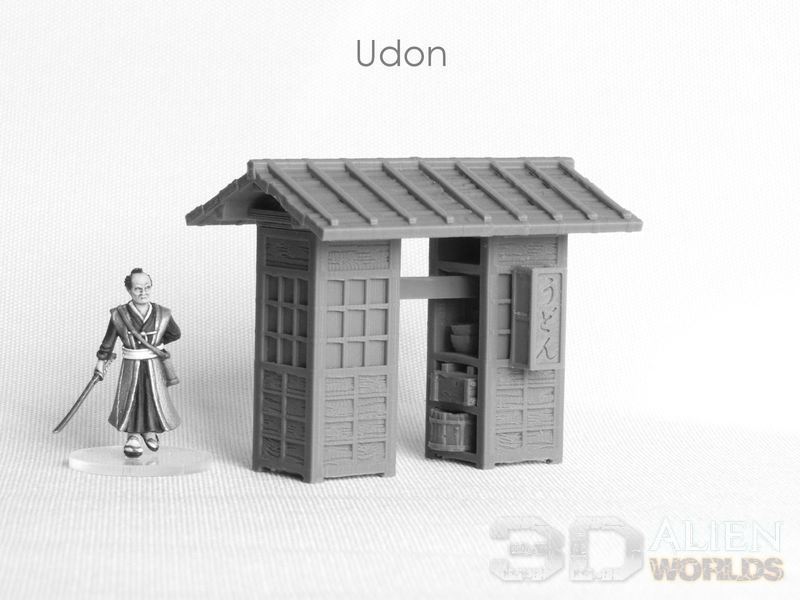
▲ Stall #10 is an unusual udon (noodles) stall, in a unique design that became common from the Edo period. The two sides contain a small stove and coalbox underneath, and plenty of shelves. In the photo above you can see a small bucket, box and bowls....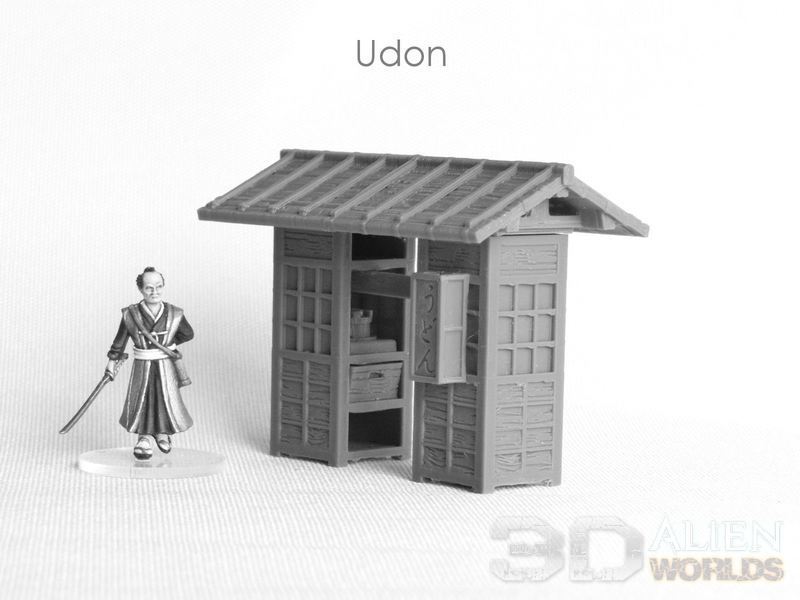
▲ .... and in this photo you can see the stove and firebox. There's a vertical sign on the right, which would be lit from the inside, but you could also choose to attach a curtain sign to the front.
The unique thing about this stall is that the stallholder would actually carry it around using the central beam (on his shoulder), before temporarily setting up shop for the evening in a busy location! Such an awesome idea!
These stall will be hitting the paint desk this week, and will be released shortly.
| << Designing the market yatai set 2022-02-11 | Painting the market stalls >> 2022-03-25 |
